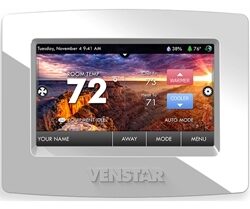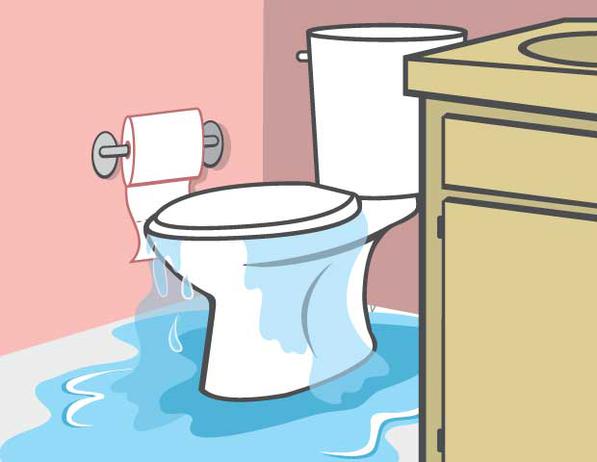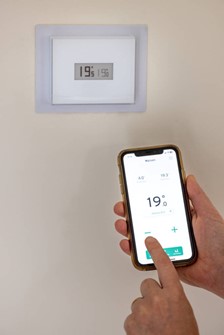
Programmable thermostats are convenient to use and can help with energy savings. But how do you know if it will work in your home? Not all programmable thermostats work with every HVAC system or the layout of every home. You need to consider the type of system you have, the number of stages, the voltage, and the wiring. Then you need to determine the best location for each thermostat in your home. Understanding the features will help you choose the programmable thermostat that is right for you.
Is the programmable thermostat compatible with your equipment?
Type of heating and cooling system
Check to see if you have a heat pump, boiler, furnace or electric baseboard. Pick a programmable thermostat that the manufacturer says will work with your system.
Some modern heating and cooling systems, like heat pumps, require specially-designed programmable thermostats. When a heat pump is in heating mode, setting back the temperature using a conventional heat pump thermostat can cause the unit to operate inefficiently. This would cancel out any savings achieved by lowering the temperature setting.
Number of heating and cooling stages
Determine how many stages you have by looking inside the old thermostat. How do you know if your furnace is 2 stage? Turn the power off to the unit. Open the bottom panel, and find the circuit board where the thermostat wires go to. For 2 stage heat you will have a W1&W2 terminals, likewise you’ll have Y1 & Y2 for 2 stage cooling.
Some programmable thermostats may ONLY be compatible with one-stage cooling and one- or two-stage heating. If you have two or more stage heating and cooling, you may need an advanced multi-stage thermostat. The Venstar ColorTouch thermostat is compatible with most heating and air conditioning equipment, including heat pumps. It works with up to four heating and two cooling stages.
Learn more about how to use the Venstar ColorTouch Thermostat!
Voltage
The voltage and wiring of your new programmable thermostat and that of your heating and cooling system must be compatible. Most modern HVAC systems are low voltage (24V), so most thermostats also operate on 24V. However baseboard heaters and many totally electric heaters require a line voltage thermostat, like this one from Honeywell, that operates on the same voltage as the heater (usually 120V or 240V).
You can check the voltage of your thermostat with a voltmeter at the thermostat base. Pull the thermostat off the base and check between the R and C terminals on the base. These are probably red and black wires, but color codes are not always followed and are not completely standardized. If you are uncomfortable doing this yourself, have a qualified service technician evaluate your system.
Wiring
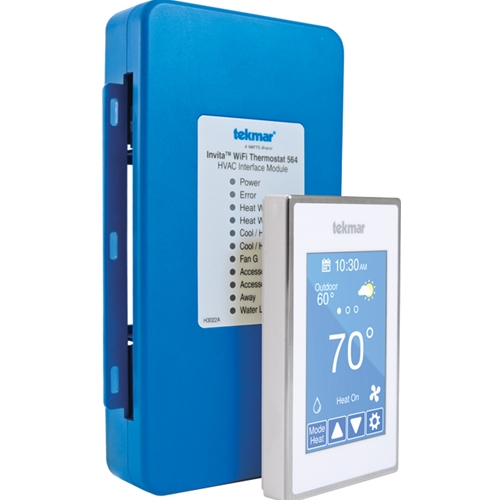 Next, you will need to determine how your existing thermostat is wired to your heating or cooling system. Begin by turning off the power supply to your furnace or A/C. Remove the cover of your existing thermostat and examine the terminals and wires. Make a list of each wire by color and the letter used to identify the terminal it is connected to. Compare this list to the wiring diagram of the new thermostat you’ve chosen. Make sure that it has at least the same number of terminals as the old one. The Invita Wi-Fi Thermostat is great for replacing older two wire thermostats. Before buying, check the wiring diagram for the new programmable thermostat to make sure it’s compatible. Diagrams can be found in the owner’s manual, which is usually posted on the website of the manufacturer or distributor.
Next, you will need to determine how your existing thermostat is wired to your heating or cooling system. Begin by turning off the power supply to your furnace or A/C. Remove the cover of your existing thermostat and examine the terminals and wires. Make a list of each wire by color and the letter used to identify the terminal it is connected to. Compare this list to the wiring diagram of the new thermostat you’ve chosen. Make sure that it has at least the same number of terminals as the old one. The Invita Wi-Fi Thermostat is great for replacing older two wire thermostats. Before buying, check the wiring diagram for the new programmable thermostat to make sure it’s compatible. Diagrams can be found in the owner’s manual, which is usually posted on the website of the manufacturer or distributor.
Most programmable thermostats have a clock that uses power from either the system’s low-voltage control circuit or from a rechargeable battery. If yours is battery-powered, make sure your HVAC system has a common C wire to charge the battery when the system is not running. Otherwise, the thermostat may turn the system on and off to get power to charge the battery. This can cause your equipment to wear out prematurely.
Is the programmable thermostat compatible with your home?
Location of thermostats
The performance and efficiency of a programmable thermostat can depend on being in the right location. Ideally, thermostats should be located where they are convenient for you to access and away from things like direct sunlight or drafts that will affect how the thermostat performs.
Thermostat location is very important for learning thermostats which use a built-in occupancy sensor to measure the family’s activity to create a customized temperature schedule. The learning thermostat needs to be in a high traffic location. If it is in an isolated place, the auto-program it creates will be inaccurate and ineffective. This could cause it to do things like turn off the heating or A/C when the house is occupied.
Number of Zones
Many homes have multiple heating/cooling zones. This allows you to control temperature in different sections of the house independently and heat or cool only the rooms you are using. As each zone has its own thermostat, you want to be able to program temperature in each zone. Therefore you’ll need multiple programmable thermostats.
Some ad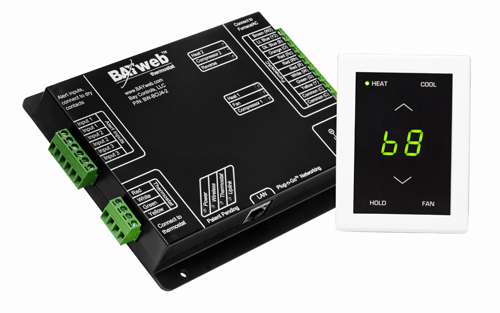 vanced programmable thermostats, like those made by BAYWeb, allow you to control multiple zones from the thermostat you designate as master. That way you don’t have to spend time programming or changing individual thermostats.
vanced programmable thermostats, like those made by BAYWeb, allow you to control multiple zones from the thermostat you designate as master. That way you don’t have to spend time programming or changing individual thermostats.
Summary
A programmable thermostat can help reduce your energy bill by heating and cooling your house only when you really need to. Picking the wrong one can lead to wasted time and money, and possibly damage your equipment. Make sure you choose a model that works with your current HVAC system and fits the layout of your house.


